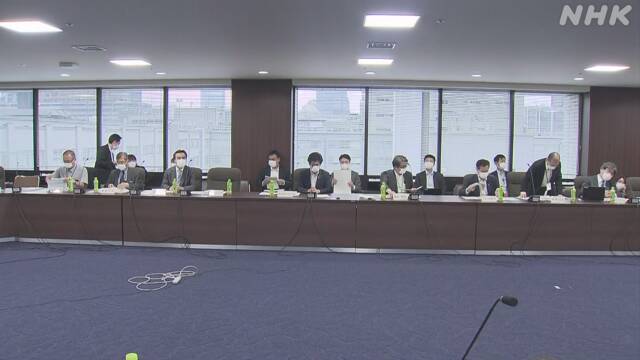As the deadline for the state of emergency approaches next week, an expert meeting of the Ministry of Health, Labor and Welfare was held to advise on measures against the new coronavirus, and while the nationwide infection situation has been declining since the middle of this month, it is still on the rise. He pointed out that there are some areas where the situation is unpredictable.
It is said that it is necessary to continue to pay close attention to the increase in the number of people in various places while replacing the highly infectious mutant virus.
At the expert meeting,
analysis was conducted
on the status
of infections and medical systems in Tokyo and Osaka, where the deadline for declaring a state of emergency is approaching, and the status of
Okinawa Prefecture and Hokkaido, where the rapid spread of infection continues
.
Among them, the expert meeting evaluated that the number of seriously ill people and those who died, which had been on the increase, has remained high since the infection situation in the whole country has been decreasing since the middle of this month.
On the other hand, there are still areas where the number of people is increasing, and it takes longer to replace highly infectious mutant viruses and reduce infections, and the number of people in each area is starting to increase again. "The situation continues to be unpredictable," he said.
Among the areas where emergency declarations have been issued, in Osaka, Hyogo, and Kyoto prefectures, the number of infected people is expected to continue to decrease, but it should be noted that the number of people in downtown areas will increase due to the improvement of the infection situation. Is analyzed as necessary.
Regarding the medical system, it is said that the severe situation where general medical care has to be restricted is still continuing, mainly in Osaka and Hyogo prefectures.
In the Tokyo metropolitan area, Tokyo, Saitama, Chiba, and Kanagawa prefectures have been flat to declining, while in Tokyo in particular, the number of people is increasing during the day and at night, and if the increase continues, the infection will spread again. = It may lead to rebound, so caution is required.
In Hokkaido, which is more than a week after the state of emergency was declared, the number of infected people continues to increase at a very high level, such as the continuous occurrence of clusters in hospitals and welfare facilities, and will continue to increase in the future. There is a possibility.
In Okinawa Prefecture, where a state of emergency was declared on the 23rd of this month, the number of infected people, mainly in their 20s and 30s, has continued to increase rapidly in urban areas such as Naha City, and the bed usage rate has also risen. It is expected that the load on the system will increase further.
In the future, it is expected that the number of infected people will continue to increase, as the spread of infection to the elderly is concerned about the increase in the number of seriously ill people and the decrease in the number of people is small.
The expert meeting said that in some areas where the state of emergency was declared, the number of infections has been decreasing, and that it is showing an effect, but the mutant virus found in the highly infectious United Kingdom and the mutant virus spreading in India. He pointed out that it is necessary for local governments to take necessary measures in a timely manner, considering the possibility that the spread of infection will proceed quickly.
In addition, regarding the mutant virus that spreads in India, it is said that there are cases where infection is confirmed by people who have not traveled in Japan, so we will investigate the infection route and suppress the spread of infection in Japan as much as possible. It is said that it is necessary to verify the border measures up to this point and continue to strengthen them promptly based on the situation overseas and in the quarantine.

